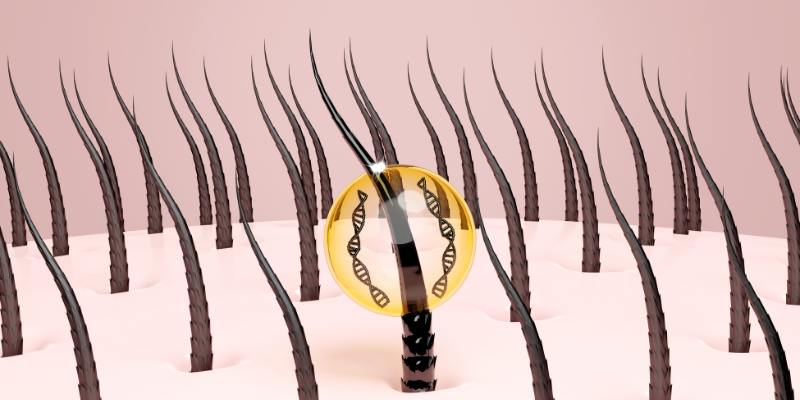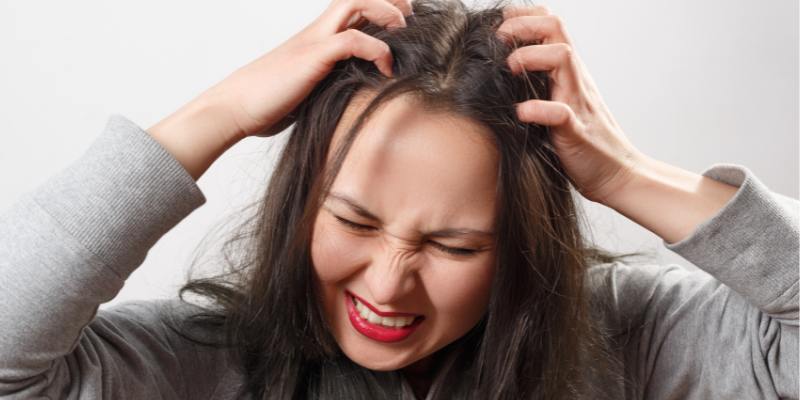Have you noticed itchy, scaly patches on your child's scalp, along with some hair loss?
It could be a ringworm!
Contrary to its name, ringworm isn't caused by worms but by a fungus. Tinea capitis, also known as scalp ringworm, is a common fungal infection that primarily affects children.
While it's not severe, it's essential to recognize the signs and seek treatment promptly to prevent complications.
What is Tinea Capitis?
Tinea capitis is caused by dermatophytes, a group of fungi that thrive on keratin, the protein found in hair, skin, and nails.
These fungi can spread through direct contact with an infected person or animal or by sharing contaminated objects like hats, brushes, or combs.
Spotting the Signs: How to Recognize Tinea Capitis
Here are some signs to watch out for:
- One or more round, itchy patches on the scalp: These patches might be red, inflamed, and scaly.
- Hair loss within the patches: The hair might break off short, leaving stubble or bald spots.
- Broken hair shafts: Infected hairs may appear brittle and break easily.
- Other Signs: Sometimes, small, white bumps or pus-filled pustules might be present.
We always recommend consulting with a dermatologist to help diagnose if you have tinea capitis.
The unknown is very stressful and you will feel a sense of relief once you know what's really going on.

Different Types, Different Appearances
There are three main types of Tinea Capitis, each with slightly different presentations:
- Endothrix: This is the most common type, and the patches may appear as described above.
- Ectothrix: This type often causes broken hair shafts with black dots at the ends, resembling tiny blackheads.
- Favus: This is the rarest type, and it can cause thick, yellow crusts to form on the scalp.
All types of tinea capitis can cause additional stress mentally. The key is to seek help for treatments.
Treatment has improved considerably over the years and will continue to improve as more cases are treated.
Treating Tinea Capitis: Taking Action to Nip it in the Bud
If you suspect your child has Tinea Capitis, seeing a doctor for diagnosis and treatment is crucial.
Treatment typically involves:
- Antifungal medications: These can be in the form of oral medication or a topical cream applied directly to the scalp.
- Over-the-counter antifungal shampoos: These can be used in conjunction with oral medication for some cases.
You may experience dramatic hair loss. Once you have been cleared of this scalp condition the Cranial Prosthesis Specialists at Wig Medical can help provided a medical wig.
It's an easy way to get back to normal.
Preventing the Spread: Keeping Ringworm at Bay
Here are some tips to avoid the spread of Tinea Capitis:
- Treat all infected individuals promptly.
- Wash combs, brushes, and hats regularly in hot, soapy water.
- Avoid sharing personal care items like towels or hats.
- Teach children about good hygiene practices.
Early Detection is Key
Tinea Capitis is a treatable condition.
By recognizing the signs early and seeking medical attention, you can ensure your child receives proper treatment and prevent the infection from spreading.
So, keep an eye out for those itchy patches, and don't hesitate to ring the doctor if you suspect ringworm!
Navigating insurance coverage for medical wigs can be complex. However, our team at Wig Medical possesses the expertise to guide you through the process, maximizing your coverage potential.
Most importantly, we prioritize personalized care and support throughout your experience. We actively listen to your concerns, address your questions, and provide expert guidance every step of the way.
At Wig Medical, we believe hair loss shouldn't define you. We empower you to reclaim your confidence and rediscover your beauty.
Explore our comprehensive wig selections online, schedule a complimentary consultation with a certified specialist today, or contact us to learn more.

Top 5 FAQs You Need to Know about Tinea Capitis
Want to learn more about Tinea Capitis?
Here are our top five FAQs you need to know!
What is Tinea Capitis?
Tinea Capitis is a fungal scalp infection that primarily affects children but can also occur in adults.
It is caused by dermatophytes, a fungus that invades hair shafts and follicles, leading to hair loss, scaling, and sometimes inflamed lesions.
It's contagious and can spread through direct contact or sharing items like hats, brushes, or pillows.
What are the signs and symptoms of Tinea Capitis?
The key signs of Tinea Capitis include patchy hair loss with scaly, red, and sometimes inflamed areas on the scalp.
The affected areas might have black dots where hair has broken off at the scalp level.
Patients might also experience itching and, occasionally, painful swollen areas on the scalp due to a secondary bacterial infection or kerion formation.
How is Tinea Capitis diagnosed?
Diagnosis typically involves a clinical examination by a healthcare provider.
A Wood's lamp examination, where the scalp is viewed under a special ultraviolet light, may be used to detect certain types of fungus that fluoresce.
The most definitive diagnostic method is a fungal culture or microscopic examination of hair or scale samples to identify the specific fungus.

What treatment options are available for Tinea Capitis?
Tinea Capitis requires systemic antifungal treatment because topical treatments cannot penetrate deeply enough into the hair follicle to be effective.
Oral antifungal medications such as griseofulvin, terbinafine, itraconazole, or fluconazole are prescribed for several weeks.
Treatment effectiveness depends on adherence to the prescribed regimen, and family members may also need to be treated or examined to prevent recurrence.
Can cranial prostheses be used for patients with Tinea Capitis?
While treating Tinea Capitis, cranial prostheses (medical wigs) are generally not recommended until the infection is fully cleared.
Introducing a prosthesis can create an environment that may foster fungal growth or complicate the scalp's exposure to air and medication.
Once the treatment is complete and the infection is resolved, cranial prostheses can be used safely to cover areas affected by hair loss if permanent damage has occurred.
This is when you contact Wig Medical for a medical wig.

